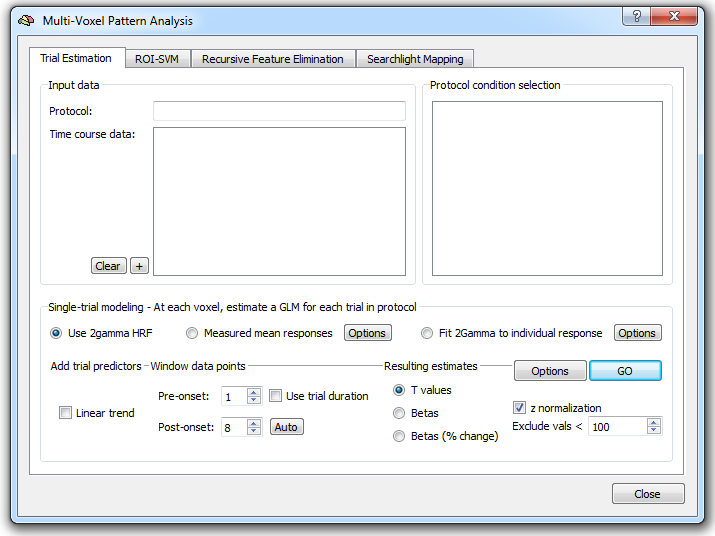BrainVoyager v23.0
Multi-Voxel Pattern Analysis (MVPA)
Multi-voxel pattern analysis (MVPA) is gaining increasing interest in the neuroimaging community because it allows to detect differences between conditions with higher sensitivity than conventional univariate analysis by focusing on the analysis and comparison of distributed patterns of activity. In such a multivariate approach, data from individual voxels within a region are jointly analyzed. Furthermore, MVPA is often presented in the context of "brain reading" applications reporting that specific mental states or representational content can be decoded from fMRI activity patterns after performing a "training" or "learning phase. In this context, MVPA tools are often referred to as classifiers or, more generally, learning machines. The latter names stress that many MVPA tools originate from a field called machine learning, a branch of artificial intelligence.
BrainVoyager QX 2.0 introduces a comprehensive set of MVPA tools for locally distributed as well as more extended (sparse) patterns of activation. The tools include a multivariate searchlight mapping approach (Kriegeskorte, Goebel, Bandettini, 2006) and a popular machine learning classifier, the support vector machine (SVM), which is used both for analyzing patterns in ROIs and for discriminating patterns that are potentially spread out across the whole brain; to restrict the number of voxels a technique called recursive feature elimination (RFE) can be used (de Martiono et al. 2008). Before describing these approaches and their implementation in BrainVoyager in more detail, a few basic concepts will be introduced in the next section.

The snapshot above shows the Multi-Voxel Pattern Analysis (MVPA) dialog that can be invoked from the Analysis menu. The names of the tabs indicate the tools described above, including ROI-SVM, Recursive Feature Elimination and Searchlight Mapping. The snapshot shows the first tab of the MVPA dialog called Trial Estimation containing important tools to estimate activation responses at each voxel for each individual trial of each condition.
References
De Martino F, Valente G, Staeren N, Ashburner J, Goebel R., Formisano E. (2008). Combining multivariate voxel selection and support vector machines for mapping and classification of fMRI spatial patterns. NeuroImage, 43, 44-48.
Kriegeskorte N, Goebel R, Bandettini P (2006). Information-based functional brain mapping. PNAS, 103, 3863-3868.
Copyright © 2023 Rainer Goebel. All rights reserved.